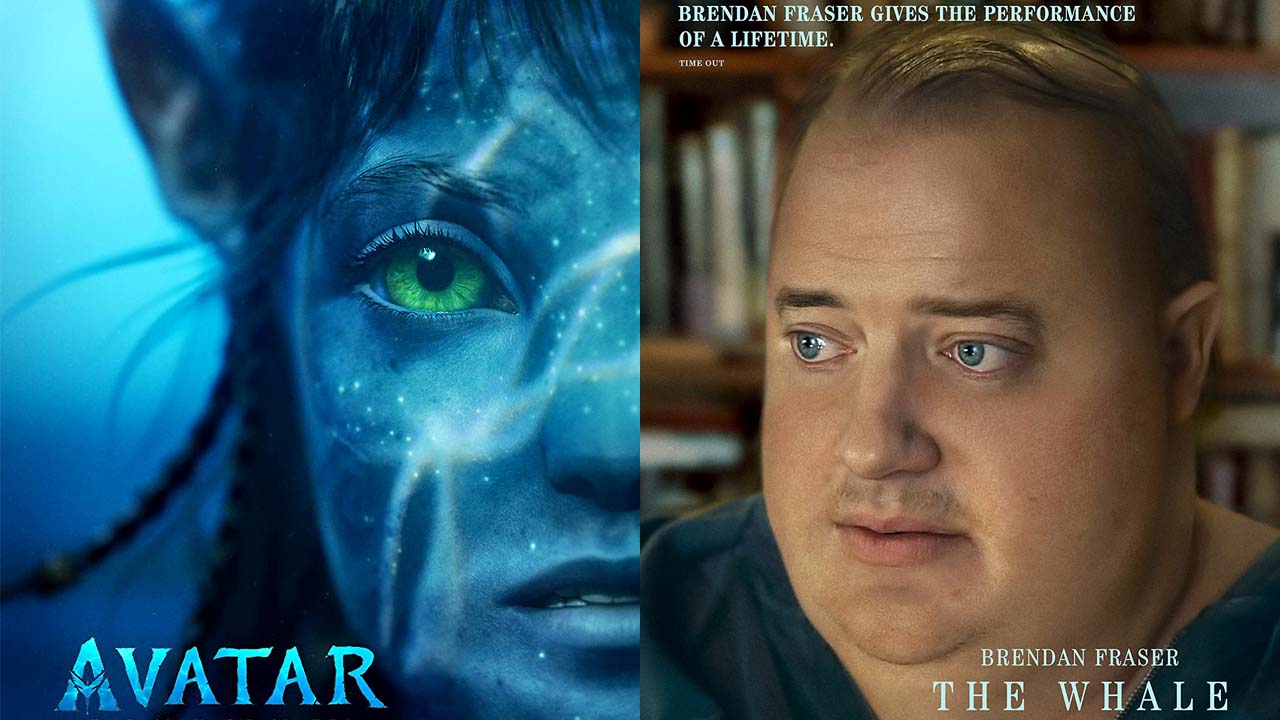Susan Granger on Stage & Screen

Avatar: The Way of Water
It’s been 13 years since James Cameron’s “Avatar” was released. And it’s well worth the wait to see his $350 million “Avatar: The Way of Water,” demonstrating how he uses cinematic technology to create a new, fantastical Na’vi realm on a distant moon called Pandora.
After his human form was killed, Colonel Miles Quaritch (Stephen Lang) is resurrected as a 10' tall Na’vi avatar. On assignment from the Resources Development Administration (RDA), he’s determined to colonize Pandora as a replacement for the dying Earth with the help of his recombinant Marine buddies.
What Quaritch doesn’t realize is that he left behind a human son, Spider (Jack Champion), who has become part of soldier-turned-liberator Jake Suilly (Na’vi-ized Sam Worthington) and Neytiri’s (Zoe Saldana) family, along with teenage Kiri (Sigourney Weaver), daughter of late RDA scientist, Dr. Grace Augustine (also Weaver); Kiri has a mystical connection with the Na’vi deity Eywa.
Together with these two adoptees, Sully & Neytiri have three biological Omaticaya children: eldest son Neteyam (Jamie Flatters), younger Lo’ak (Britain Dalton) and daughter Tuk (Trinity Jo-Li Bliss).
Fleeing from villainous Quaritch and his treacherous ‘sky people,’ they take refuge on Awa’Atulu with Chief Tonowari (Cliff Curtis) and his pregnant wife Ronai (Kate Winslet). The reef-dwelling Metkayina are an aquatic clan who introduce them to an underwater world with bioluminescent vegetation. That’s where Lo’ak befriends an outcast Tulkun (a gigantic, super-intelligent whale-like creature).
(The forest Na’vi has pale blue skin, luminescent freckles and thin tails, harmonious with their natural world, while the Metkayina’s skin is more turquoise with thicker, finny tails to enable swimming.)
Working with James Cameron, screenwriters Rick Jaffa and Amanda Silver have developed an emotional arc for each motion-captured character. The result is compelling, fully digital sci-fi, highlighted by cinematographer Russell Carpenter’s dazzling visual effects, particularly the breathtaking deep-sea sequences.
FYI: The original “Avatar” (2009) is streaming on Disney+. Note this sequel has no post-credit scene, teasing future “Avatar” adventures, scheduled for 2024, 2026 and 2028.
On the Granger Gauge of 1 to 10, “Avatar: The Way of Water” swims in with a wondrous, visually stunning 10 — meant to be seen on the big screen.
The Whale

Critics’ Choice and Golden Globes nominee Brendan Fraser delivers a remarkable performance in the title role of Darren Aronofsky’s “The Whale,” adapted from his play by Samuel D. Hunter.
Before we even glimpse his gigantic, 600-pound frame, we hear his gentle voice, teaching an English literature class on-line. It’s Monday — and while Charlie can see his students via Zoom, his image is blank.
Suffering from imminent heart failure, pathetic Charlie (Fraser) is house-bound, barely able to maneuver to the bathroom with the aid of a walker. As the week progresses, each day, Liz (Hong Chau), his caregiver/trusted friend comes to visit, checking on his declining health and bringing him food.
Grief-stricken Charlie is still mourning the suicide of his gay partner and obviously eating himself to death to conclude a torment that is amplified by the anger of his estranged, irreverent teenage daughter Ellie (Sadie Sink) who cannot understand why he abandoned her.
Persistently intruding into Charlie’s isolation and few pleasurable moments masturbating to gay porn, Thomas (Ty Simpkins) is a misguided New Life missionary who refuses to stop appearing on his front porch. Then, eventually, there’s the appearance of Charlie’s still-ambivalent ex-wife (Samantha Morton).
Encased in a latex suit with digital prosthetics, designed by Adrien Morot, Fraser’s portrayal is inevitably minimalist, a choice that exudes pathos, even when he’s gobbling greasy pizza or devouring a bucket of fried chicken.
Charlie’s guilt-tinged love is summarized when he says: “I just want to know I did one good thing in my life!”
Absent from the screen for several years, Fraser was involved in a 2003 sexual harassment case. In an interview with GQ magazine, he said he was groped by Philip Berk, former head of the Hollywood Foreign Press Association; Berk denied the allegation but admitted to pinching Fraser’s rear as a joke.
Now, Fraser adroitly demonstrates how his impressive talent, previously demonstrated in “Gods and Monsters,” was perhaps wasted in “George of the Jungle” and “Mummy” movies.
Best known for “Black Swan,” “The Wrestler,” and “Requiem for a Dream,” director Darren Aronofsky is obviously drawn to dark stories, venturing this time into the agonizingly grotesque as chronicled by cinematographer Matthew Libatique.
On the Granger Gauge, “The Whale” is an empathetic yet soulful 7 — playing in theaters.
 Susan Granger is a product of Hollywood. Her natural father, S. Sylvan Simon, was a director and producer at M.G.M. and Columbia Pictures. Her adoptive father, Armand Deutsch, produced movies at M.G.M.
Susan Granger is a product of Hollywood. Her natural father, S. Sylvan Simon, was a director and producer at M.G.M. and Columbia Pictures. Her adoptive father, Armand Deutsch, produced movies at M.G.M.
As a child, Susan appeared in movies with Abbott & Costello, Red Skelton, Lucille Ball, Margaret O’Brien, and Lassie. She attended Mills College in California, studying journalism with Pierre Salinger, and graduated from the University of Pennsylvania with highest honors in journalism.
During her adult life, Susan has been on radio and television as an anchorwoman and movie and drama critic, syndicating her reviews and articles around the world, including Video Librarian. She has appeared on American Movie Classics and Turner Classic Movies. In 2017, her book 150 Timeless Movies was published by Hannacroix Creek Books.
Her website is www.susangranger.com. Follow her on Twitter @susangranger.
